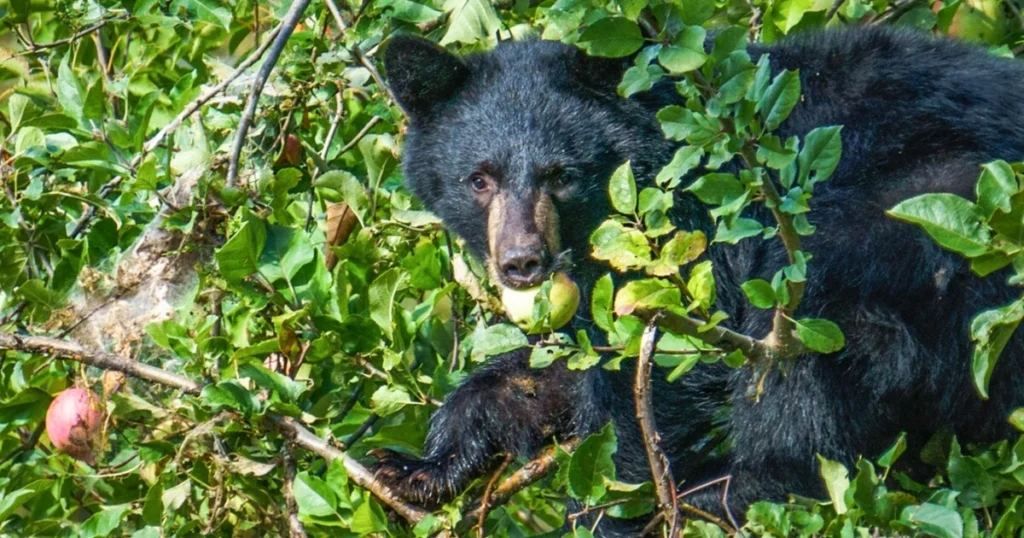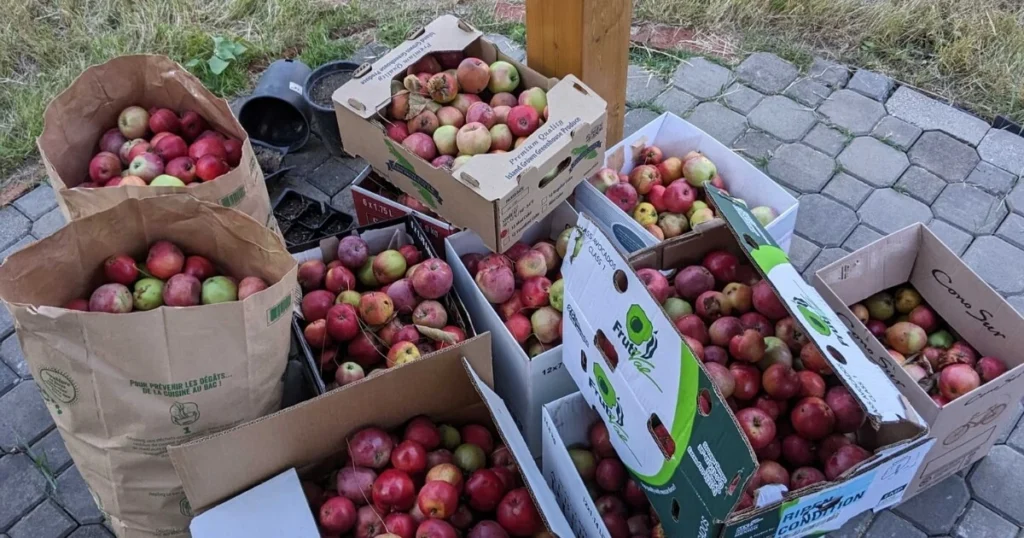
Photo by Sward85 / Getty Images
Pears, apples, and dozens of other fruits and berries are getting ready to be harvested on residential properties across Canada. And if you want to help your community while protecting wildlife, these fruits and berries can go a long way.
Ripened fruit and berries are delicious for people – but also for local wildlife. When not picked, these foods attract animals, including raccoons, coyotes, and black bears. Particularly as the seasons roll into fall through September and into October, bears enter hyperphagia – the period before hibernation that leads them to consume up to 20,000 calories per day.
The Fur-Bearers often hear from people who are unsure of what to do with their fruits or berries, particularly during bumper crop years. We’ve put together four ways to help your community while helping you and your neighbours coexist with wildlife:
2 Share with the animals. Wildlife rehabilitators, farmed animal sanctuaries, or nearby farms may be happy to take extra produce off your hands. Find and contact your local rehabilitators, sanctuaries, or rescues to see if they would benefit from a delivery of your fruits or berries.

Submitted photo.
3 Share with your community! With rising food prices and inflation, food banks, shelters and community programs are in significant need of support. Contact your local community programs and find out if they’re interested in receiving fruits and berries; some may even be willing to send volunteers to help collect them all!
4 Give them away! Have a huge haul of pears, or too many apples on the tree to pick yourself? Consider letting your friends, family members, or neighbours come by to collect or pick their own fresh fruit. It can be a great way to meet new people in your community or an excuse to have your best friends by for an afternoon.
There are innumerous ways to share locally grown produce, including farmers markets, cideries and breweries, and in some communities, produce-picking programs (like the Vancouver Fruit Tree Project).
Why it matters
Wildlife like bears and coyotes may enter a community in search of food; this is normal, healthy behaviour. But when they find a reliable food source – such as a tree full of unpicked fruit – they’re more likely to stay. This can lead to an increased risk of negative encounters with pets and people, which end tragically with wildlife being killed. Fruit trees and berries are considered attractants, and in some communities, it is required by law to either remove the produce or the plants (as is the case in Canmore, Alberta).
You can learn more about how feeding (directly and indirectly) of wildlife negatively impacts the ecosystem and alters the behaviour of animals, which is a regular precursor to negative encounters, by clicking here.
Do you have suggestions on how people can make use of fruit trees and berries on their properties? Let us know via social media or by emailing info@TheFurBearers.com.
